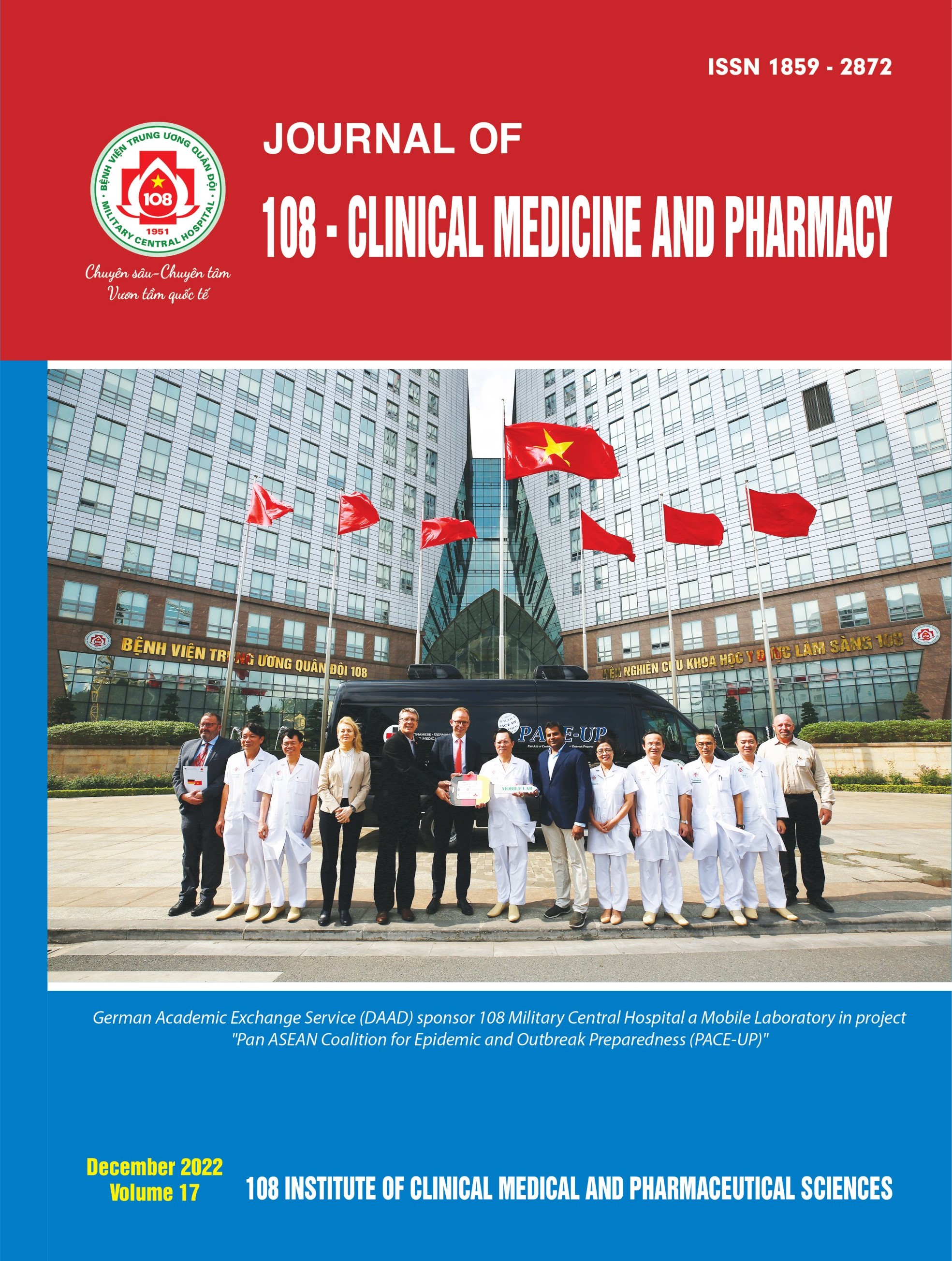The results of persistent atrial fibrillation with radiofrequency energy after a six-month follow-up
Main Article Content
Tóm tắt
Objective: To evaluate the efficacy and safety of the radiofrequency ablation of persistent atrial fibrillation (AF) after a 6-month follow-up. Subject and method: A prospective study of 40 patients with persistent AF who underwent catheter ablation using a three-dimensional (3D) system at the Vietnam Heart Institute, Bach Mai Hospital. Result: The mean age of patients was 54.25 ± 12.54. The procedure time was 256.25 ± 48.61 minus, the irradiation time was 29.55 ± 14.29 minus, and the number of ablation points was 132.77 ± 53.79 points. The ablation time was 64.10 ± 24.76 minus, and the number of cardioversion shocks was 1.17 ± 1.1 times. No severe complications occurred during and after the procedure, and there and 2D echocardiography before the procedure and during the follow-up period. The success rates of maintaining sinus rhythm (SR) after 6 months, isolating the pulmonary vein alone, and the additional ablation group were 60.7%, 55%, and 75%, respectively. The successfully maintained SR group had no other AF symptoms [European Heart Rhythm Association (EHRA) class I], and patients with AF recurrence showed symptoms (EHRA class IIb). Conclusion: AF radiofrequency ablation is a new method with a success rate of 60.7% after a 6-month follow-up. Patients with successful ablation showed symptom improvement. The ablation procedure is safe, with a low rate of severe complications.
Article Details
Các tài liệu tham khảo
2. Rolf S, Kircher S, Arya A et al (2014) Tailored atrial substrate modification based on low-voltage areas in catheter ablation of atrial fibrillation. Circ: Arrhythmia and Electrophysiology 7(5): 825–833.
3. Kirchhof P and Calkins H (2017) Catheter ablation in patients with persistent atrial fibrillation. European Heart Journal 38(1): 20-26.
4. Kis Z, Muka T, Franco OH et al (2017) The short and long-term efficacy of pulmonary vein isolation as a sole treatment strategy for paroxysmal atrial fibrillation: A systematic review and meta-analysis. Current Cardiology Reviews 13(3): 199-208.
5. Numminen A, Penttilä T, Arola O et al (2022) Treatment success and its predictors as well as the complications of catheter ablation for atrial fibrillation in a high-volume centre. Journal of Interventional Cardiac Electrophysiology 63(2): 357-367.
6. Mansour M (2020) Persistent atrial fibrillation ablation with contact force-sensing catheter. Clinical Electrophysiology 6(8): 12.
7. Terricabras M, Mantovan R, Jiang C et al (2020) Association between quality of life and procedural outcome after catheter ablation for atrial fibrillation: A secondary analysis of a randomized clinical trial. JAMA Network Open 3(12): 2025473-2025473.
8. Linh PT, Khanh PQ, Viet NG (2015) Initial evaluation the effectiveness of paroxysmal atrial fibrillation ablation with radiofrequency energy. Vietnam Medical Journal 429(2): 144-150.
 ISSN: 1859 - 2872
ISSN: 1859 - 2872
